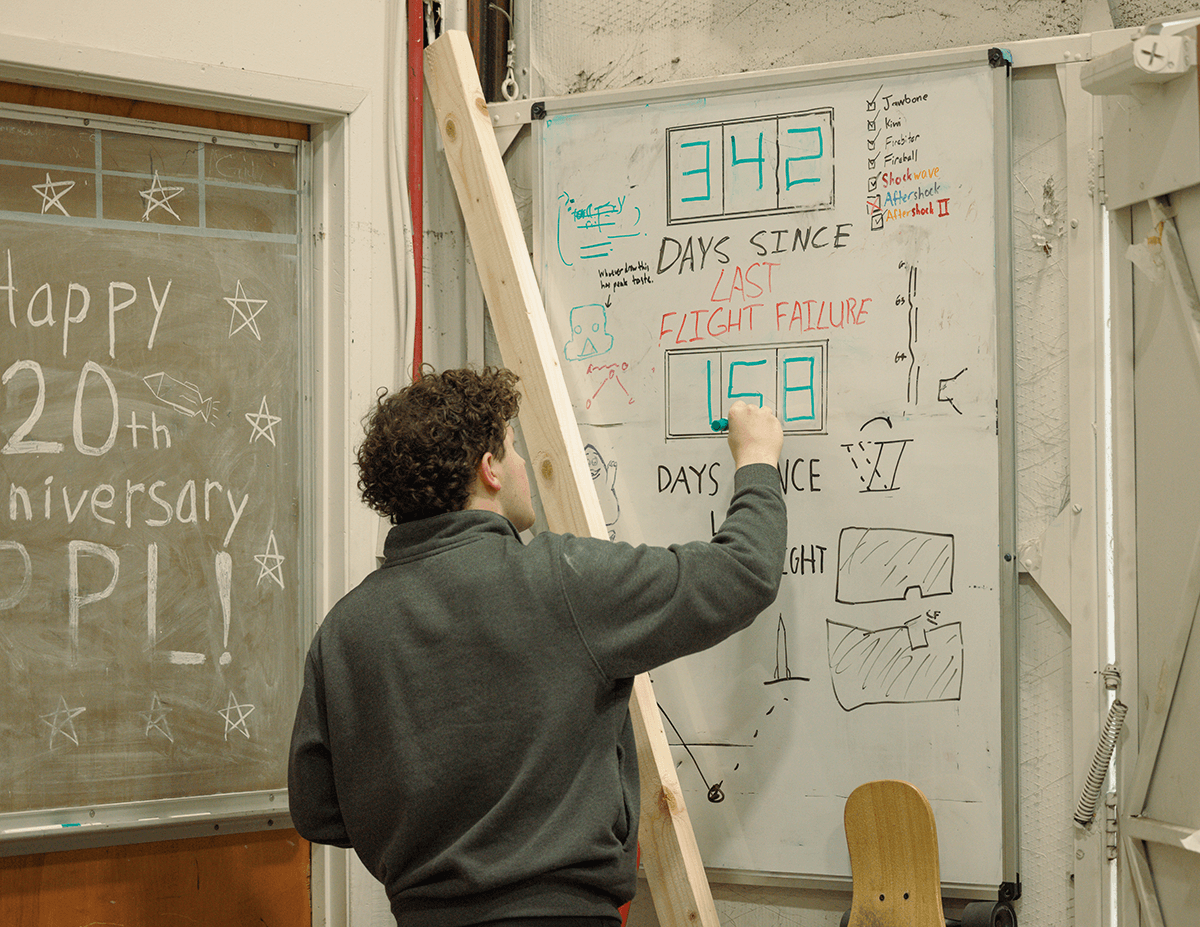The USC Department of Astronautical Engineering Celebrates 20 Years

How can you beat the peak experience of a moon landing? After the giant leap of July 20, 1969, astronaut Neil Armstrong’s next step was to apply for a master’s program in aerospace engineering at USC. He enrolled the following year.
You might have expected Armstrong to have earned his master’s degree at USC before he embarked on the Apollo 11 mission. Instead, this was his way of keeping his mind in orbit while his feet were on the ground. As a lifelong learner, a master’s at USC was an opportunity to deepen his knowledge of aviation and space technology after coming back to Earth.
Back then, engineering for space was typically a subset of aerospace departments. When the USC Viterbi School of Engineering’s academic division in astronautical engineering was established in 2004 (later becoming the USC Department of Astronautical Engineering, ASTE, in 2009), USC was one of the first universities in the nation to have a department dedicated purely to engineering for space.
The formation of the department was part of wider radical changes in the national approach to space exploration. Blue Origin, SpaceX, Virgin Galactic… Many of the companies that propelled the commercial space industry were founded at the turn of the new millennium. Space was no longer solely the domain of government agencies such as NASA. The entrepreneurial “New Space” movement focused on innovation driven by cost reduction, rapid prototyping and advanced access to an influx of new data.
“It was clear that something was changing in the national zeitgeist — astronautics was now central to the national economy, not just a matter of foreign policy,” said Professor Dan Erwin, chair of ASTE. “The competitive, business-driven model of New Space led to an explosion of new opportunities for graduates interested in space engineering. We were determined to act quickly to ensure that our students and faculty were positioned to become leaders — both in terms of industry roles and the research that provides the foundation for innovation.”
Erwin was one of the co-founders of ASTE, along with then-Dean C.L. Max Nikias; the first chair of the department, Professor Mike Gruntman; and now-Professor Emeritus Joseph Kunc. Dell Cuason, now the department business manager, also played a central role in administrating the formation of the department.
Twenty years on, ASTE has become something of a neutron star in the academic galaxy — think super-high energy, compact and with an impact that far outweighs its relatively small size. Just look at the alumni startups propelled by the program: Relativity Space, Ursa Major, Kayhan Space, Violet Labs and ExoSpace, to name just a few.
An astronautics ecosystem
The decision by a group of forward-thinking professors and administrators to form a department was a game-changer for the discipline. Now, the challenges of developing technology for navigating beyond Earth’s atmosphere could be tackled with specialist expertise commensurate with the rapidly evolving space enterprise.
Today, ASTE is one of just a handful of university departments to offer bachelor’s, master’s and Ph.D. degrees in astronautical engineering — a distinguishing factor that has a lot to do with USC’s location at the center of the Southern California space industry.
“Here in Los Angeles, we’re surrounded by the nation’s top established space companies and groundbreaking startups,” Erwin said. “We’re not just solving academic problems. The relevance of our research and the quality of our teaching depends on meeting the industry where it’s at. Our students do summer internships and go on to secure full-time positions at local companies such as SpaceX, Boeing, Northrop Grumman and the Aerospace Corporation, as well as the NASA Jet Propulsion Lab [JPL].”
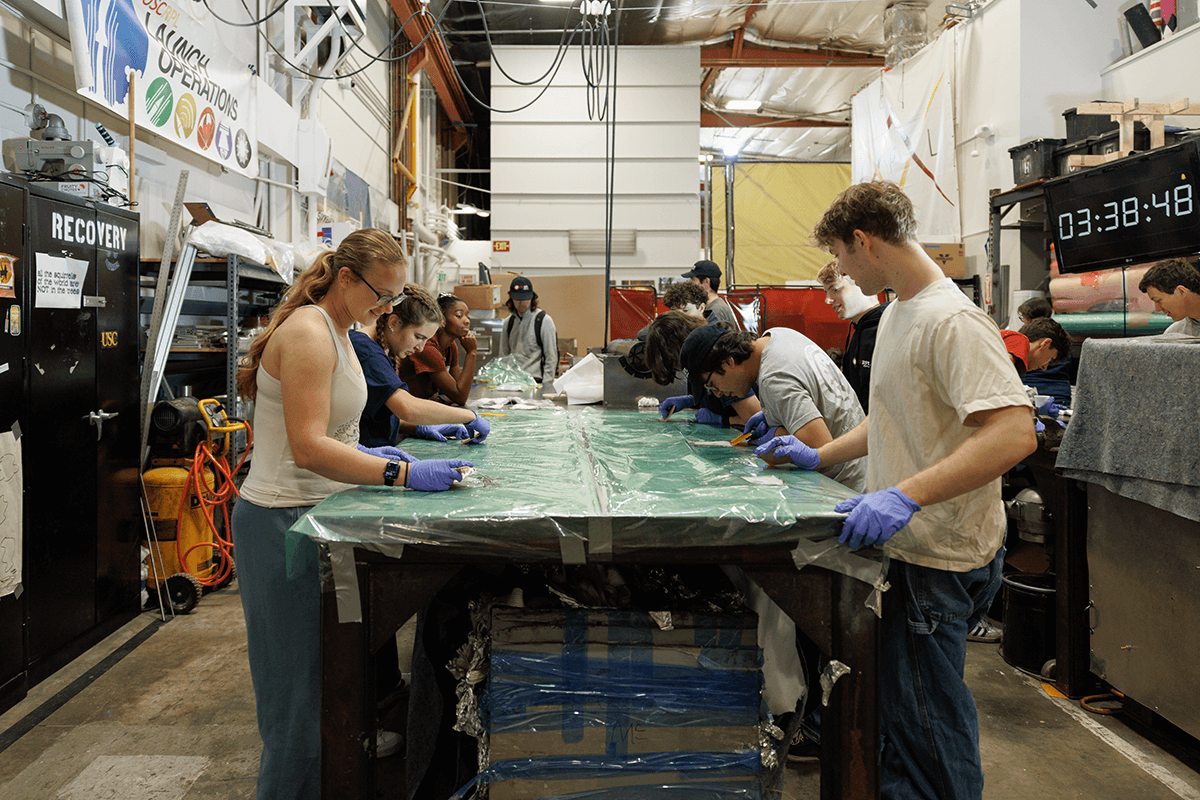
The founders set out to design a unique curriculum, looking beyond the traditional topics addressed by astronautical programs and toward emerging challenges central to the New Space movement.
As a result, the department’s master’s program, with more than 1,000 master’s degrees awarded since 2004, has become a go-to for recruiters from the nation’s top space engineering companies. To cite just one example, USC Viterbi is one of the most represented engineering schools among SpaceX employees. Furthermore, through USC Viterbi’s online learning initiative, DEN@Viterbi, space professionals in more than 30 states across the country have graduated from the ASTE master’s program.
“An important differentiating feature of ASTE is that its master’s program does not require an undergraduate degree in aerospace-related fields,” explained Professor Gruntman, who has directed the program since the mid 1990s. “The program is open to qualified students with degrees in all areas of hard sciences and engineering, reflecting the workforce in the space industry which employs scientists and engineers of all imaginable specializations.”
From fundamentals to human spaceflight
The field of astronautical engineering has its roots in rocket science. As such, research and teaching at most astronautics academic programs have traditionally focused on disciplines directly related to vehicle engineering such as orbital dynamics, rocket and spacecraft propulsion, and gas dynamics. In recent years, ASTE has been at the forefront of evolving a new interdisciplinary program that encompasses all important technological areas of space exploration.
Joseph Wang, professor of astronautics, aerospace and mechanical engineering, said: “The essence of astronautics is really about the science and technology required to enable and support all activities — from initial exploration to eventual long-term human settlement in unknown extreme environments.”
To educate the next generation of astronautics leaders, the ASTE faculty has developed one of the most comprehensive curriculums among leading universities, with many of the courses requiring a grasp of advanced mathematics and physics. The research conducted by faculty is equally interdisciplinary, with a strong focus on the fundamentals of space science.
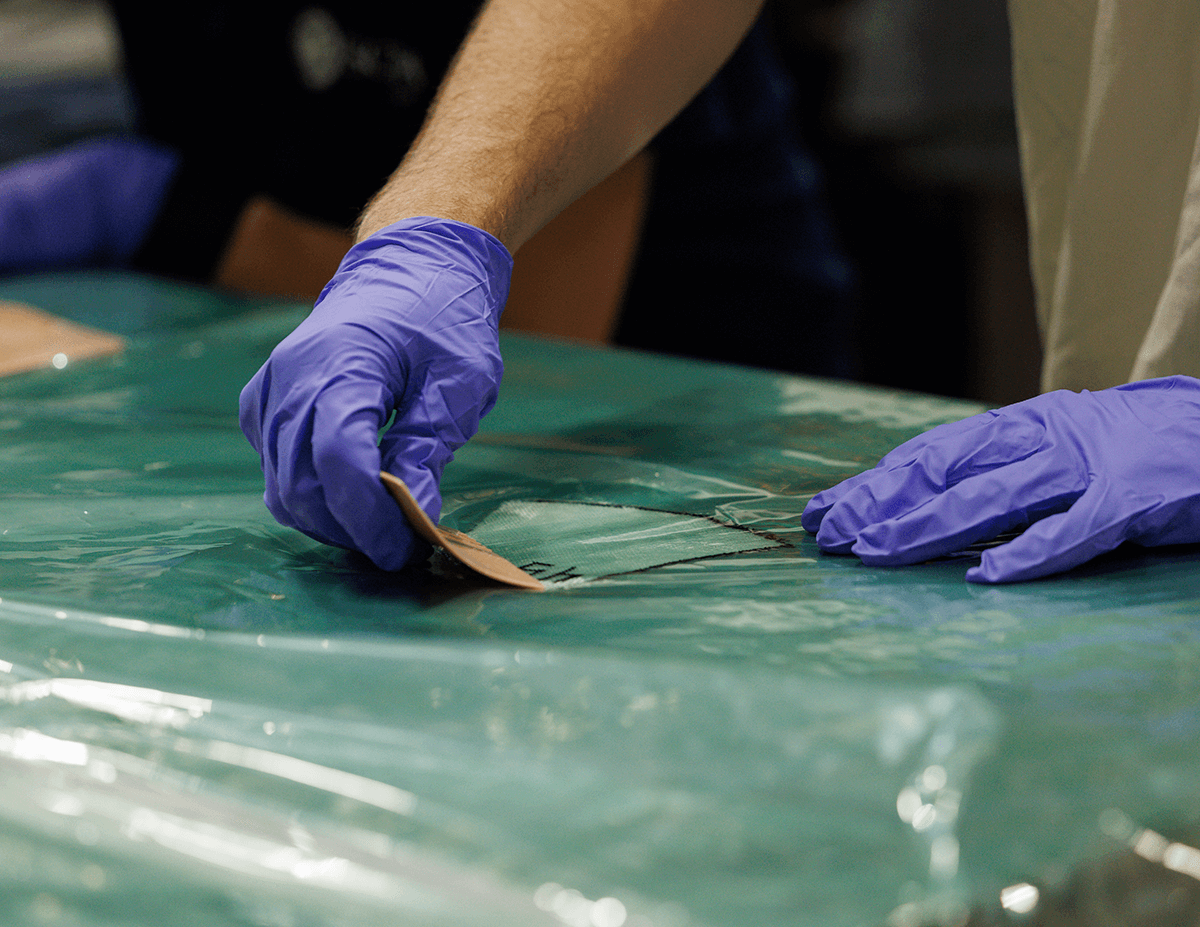
For instance, Wang and his students have carried out investigations on core science subjects (such as plasma turbulence in the solar wind and water formation on the lunar surface) as well as technology subjects (such as spacesuit damage from charging interactions on the lunar surface and potential ozone layer depletion from satellite demise during atmospheric reentry).
Today, driven by new technology, reductions in cost and the entry of private companies into the space sector, the discipline of astronautics is rapidly adapting. Advances in microelectronics, computing, sensors and manipulators, as well as interest from deep-tech investment firms, have led to an explosion of activity in robotic space exploration. The demand for cost-effective and reusable technologies aligns with the department’s expertise in propulsion systems and innovation in lightweight materials.
Garrett Reisman, professor of astronautics practice at ASTE, is a former NASA astronaut who flew on all three space shuttles and previously worked at SpaceX as a director of space operations. At USC, he teaches courses focusing on human spaceflight and operations.
“I developed the topics for my classes back when I was at SpaceX,” Reisman said. “I was prompted by the realization that new hires were having to learn certain skills and new knowledge on the job, because those things weren’t taught at the universities.”
As a result, students in Reisman’s classes find themselves learning how to make a spacesuit, how to scrub carbon dioxide out of a spacecraft atmosphere and how to control a capsule during entry. Drawing upon his firsthand experience of going to space and back — at least at the level of the problems his students are solving — Reisman prepares them to set their sights high after graduating.
Pioneering partnerships
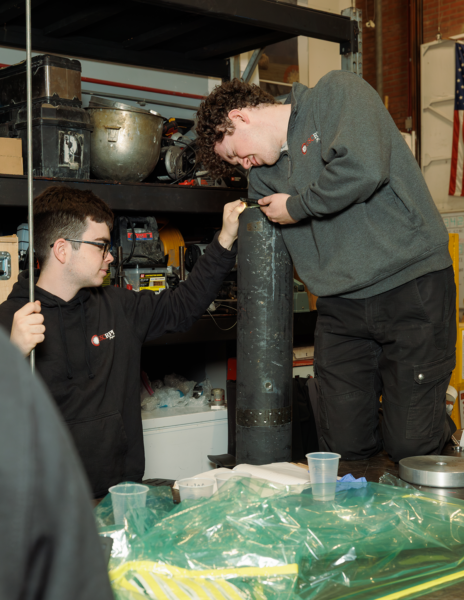
In 2022, USC was elected into the U.S. Space Force’s University Partnership Program, an initiative to foster STEM research and leadership development, as well as scholarships and mentorship opportunities for USC students, faculty and Air Force cadets. Furthermore, ASTE has kept in step with government and industry priorities by forming partnerships and inviting prominent professionals to teach academic programs.
Anita Sengupta, an adjunct associate professor of astronautics, is a USC Viterbi alumna and founder of Hydroplane, a pioneer in developing modular hydrogen fuel cell powerplants aimed at decarbonizing aviation. Sengupta was previously a senior engineer at JPL, where she led projects including the supersonic parachute system used in the entry, descent and landing phase of the Mars Curiosity rover mission. In recent years, ASTE has further strengthened the relationship with JPL, with collaborative research programs and a spacecraft design class taught by JPL engineers.
University Professor Azad Madni, director of the program in Systems Architecting and Engineering that became part of ASTE in 2013, is another prominent faculty member who is distinguished by many notable achievements. In addition to being a member of the National Academy of Engineering (NAE) and an honorary fellow of the American Institute of Aeronautics and Astronautics (AIAA), he is a fellow of several other professional science and engineering societies. He is credited with developing the field of transdisciplinary systems engineering, defined as a meta-discipline that leverages the convergence of engineering with other fields of knowledge and practice. In recognition of these achievements, Madni was awarded NAE’s Bernard M. Gordon Prize for Innovation in Engineering and Technology Education, and the Simon Ramo Medal for pioneering contributions to systems engineering by the Institute of Electrical and Electronics Engineers (IEEE).
“I am excited about the prospects of leveraging AI and machine learning in the space domain,” Madni said. “Not only can AI take over many of the routine tasks currently performed by ground operators, but it can also enable higher levels of autonomy in space navigation and monitoring tasks, as well as enhance domain awareness, especially in the face of disruptions and escalating threats.”
ASTE students also have the advantage of being taught by part-time lecturers who are top specialists in the industry, holding positions at companies including the Aerospace Corporation, Northrop Grumman, Aerojet Rocketdyne, Microcosm, Space Environment Technologies, the International Association for Advancement of Space Safety, and many others. Their contributions have been central to the success of the department.
“From the very beginning, students were taught by professors who also had positions in industry,” said Professor Emeritus Kunc. “Going forward, we will continue involvement of high-tech experts in our teaching programs, keep developing the internship network, and support our student-run activities — for example, the incredibly successful USC Rocket Propulsion Lab [USCRPL].”
Student-led R&D
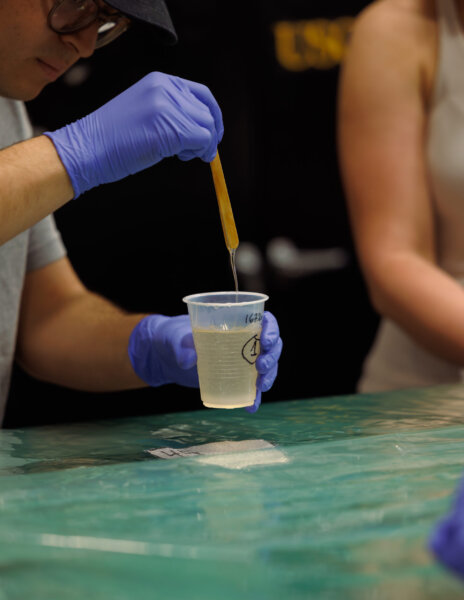 USCRPL was founded in 2005 as part of the department’s goal to advance students’ development of practical skills through hands-on learning. The external outlook of ASTE — looking beyond campus, to activities taking place up in space and on the ground in R&D labs — set the standard for a level of ambition far exceeding most student rocketry groups.
USCRPL was founded in 2005 as part of the department’s goal to advance students’ development of practical skills through hands-on learning. The external outlook of ASTE — looking beyond campus, to activities taking place up in space and on the ground in R&D labs — set the standard for a level of ambition far exceeding most student rocketry groups.
When USCRPL was founded by Professor Erwin and Ian Whittinghill ’08 (an undergraduate at the time, and now co-director of his own California-based company, Whittinghill Aerospace), the goal was to become the first student-led group to design, build and successfully launch a rocket past the Kármán line, the recognized boundary of space at approximately 328,000 feet above Earth. That goal was achieved in 2019, when USCRPL’s rocket Traveler IV reached an altitude of approximately 340,000 feet.
It then took five years of intense hard work and iterative trial and error for the team to beat their own record; in October 2024, Aftershock II reached an altitude of 470,400 feet and achieved a top speed of 3,602 miles per hour (Mach 5.1).
“It would have been enough just to beat the record set by Traveler IV,” said Stracy Hoang, USCRPL recovery lead. “But we ended up breaking the global amateur rocketry altitude record of 73 miles, held for 20 years. Next, we have our sights set on being the first amateur rocketry group to send a scientific payload up into space.”
Whittinghill, who has closely followed the group’s activities and serves as a mentor and adviser, has watched his vision for USCRPL become a reality. “My goal was that we would be the first student group to successfully build and launch a rocket into space,” he said. “I’ve watched each generation of students put the foundational pieces in place that will outlast their own involvement in the team — and over time, those pieces have come together to achieve and then exceed the original goal.”
In the lab alongside USCRPL, the graduate-level research conducted by the USC Liquid Propulsion Lab (USCLPL) is aligned with the current industry push for advancements in reusable rocket technology. This involves designing, building and testing sophisticated 3D-printed, regeneratively cooled liquid rocket engines using storable and cryogenic propellant components.
The last year has seen the successful test fire of the team’s liquid oxygen/kerosene regeneratively cooled Balerion; 5:1 throttled engine Jessie and James 2; and Theseus, a rapidly developed ablative composite engine. USCLPL has also presented results multiple times at AIAA conferences and International Astronautical Congresses (IAC), published as papers documenting these gatherings.
USC in orbit
The commitment to keep in step with industry is demonstrated by the USC Space Engineering Research Center (SERC), co-founded and directed by David Barnhart, research professor of astronautics. SERC is a joint effort of ASTE and the USC Information Science Institute (ISI).
At SERC, faculty and researcher-led work leverages students within R&D teams to develop innovative space systems, focusing on hands-on building, testing and flight demonstrations of spacecraft and nanosatellites. To date, SERC has launched three satellites into orbit and has a fully operational ground control station located on campus.
“SERC was established to grow ASTE’s research activities into a national level center,” said Barnhart, who brings extensive experience from his work in the commercial space industry, United States Air Force and Defense Advanced Research Projects Agency (DARPA). “A significant turning point in the center’s activities came in 2014, when we directed much of our efforts toward the new research area of space servicing,” Barnhart added. “This encompasses maintenance and updates to space platforms, satellites and spacecraft after they are launched into space.”
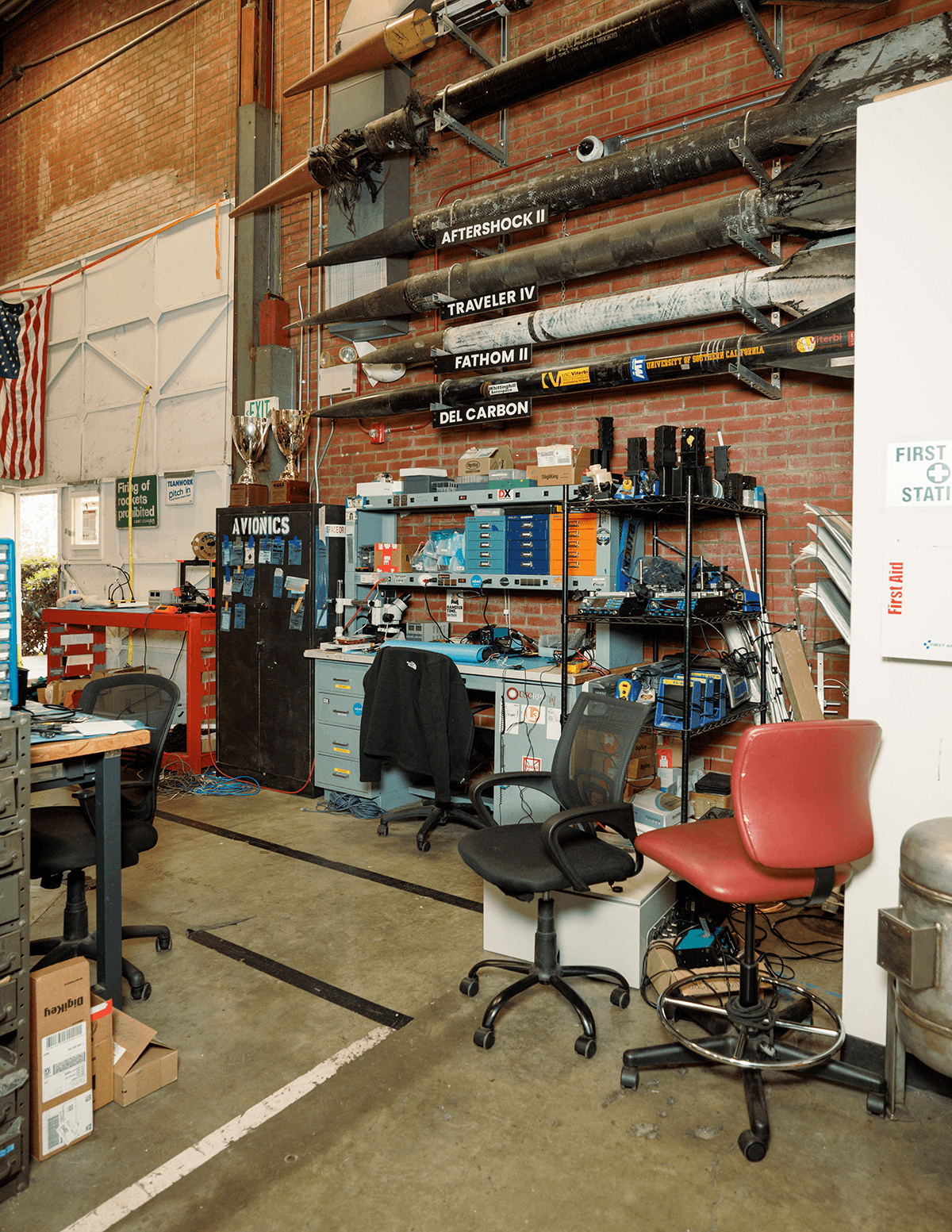
Examples of prominent SERC activities leading the transition to a sustainable orbital ecosystem include the REACCH robotic gripper and CLINGERS docking system. Both are significant as USC’s first experimental research prototypes to be tested on board the International Space Station (ISS).
REACCH was transitioned to an industry partner and has been successfully demonstrated inside the ISS for eventual deployment to help active debris removal. CLINGERS came from a mechanism that was patented by Professor Berok Khoshnevis — the holder of the Louise L. Dunn Endowed Professorship in Engineering and Distinguished Professor of Civil and Environmental Engineering, Astronautics, and Aerospace and Mechanical Engineering — and was originally designed for the purpose of ground robotics. SERC took the original concept of a coupling system that can be attached to any type of vehicle or platform and added a unique AI-based sensing system optimized for space servicing.
CLINGERS was part of a payload launched on a Falcon 9 rocket in 2024 and is now an active flight project onboard the ISS, collecting data to demonstrate how cooperative docking systems can increase the safety and efficiency of in-orbit assembly and maintenance.
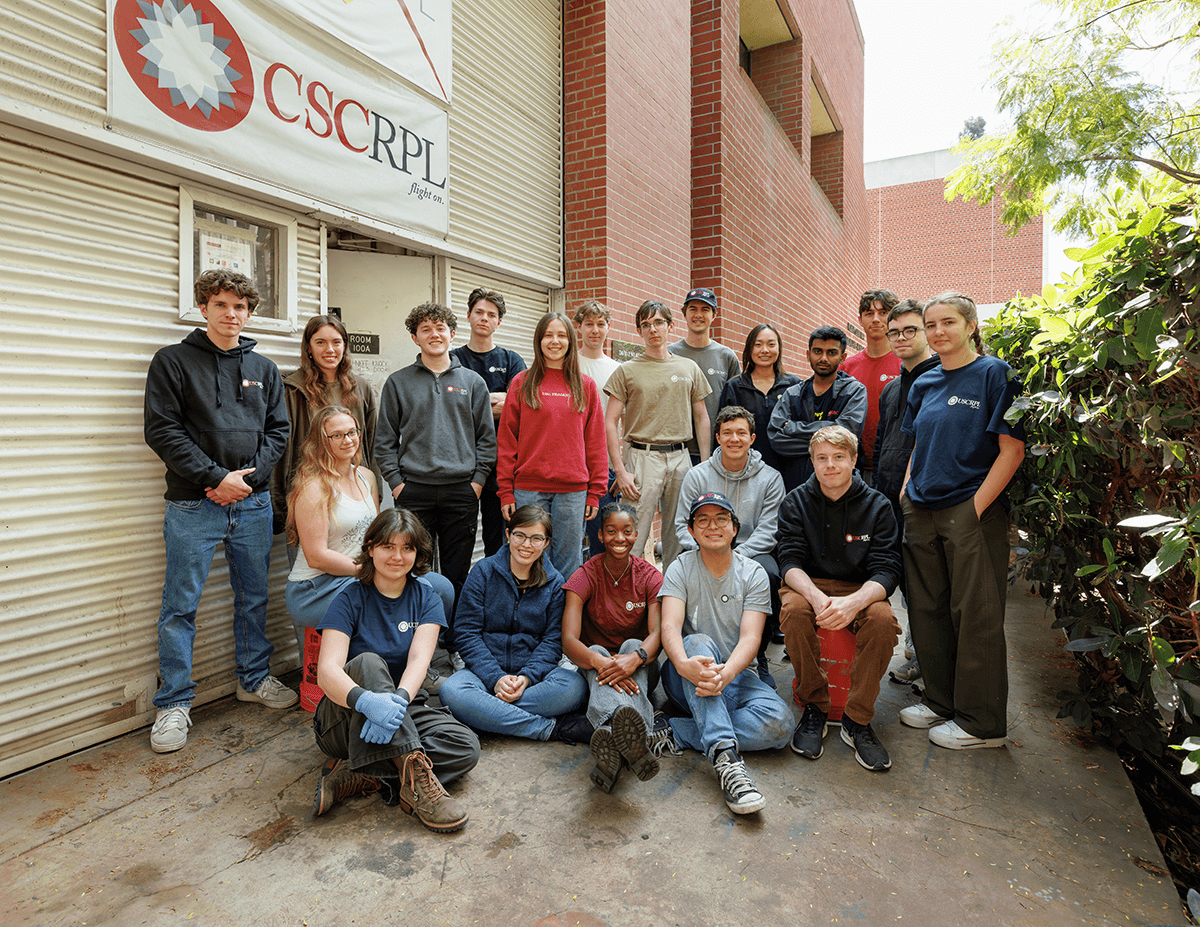
After ad astra
Now that ASTE activities have a physical presence in space, what’s next for the department? The direction for growth has stayed steady since its founding — a combination of in-depth research, pedagogy that combines an understanding of fundamentals with hands-on practice, and a commitment to developing strong industry and government partnerships.
Within USC, the department is also strengthening the interdisciplinary network necessary to innovate and solve ever-more complex problems. In 2024, faculty members at ASTE and across USC Viterbi partnered with colleagues in science and public policy to establish the USC Center for Research in Space Technologies (CREST), a consortium that serves as an important resource for governmental organizations, large-scale corporations and nimble startups driving the future of space exploration.
The department’s vision for the future is focused not only on advancing the technology that will support human presence in space but also on cultivating an ethos of responsible practice for the graduate engineers who will take that future into their own hands.
“The goal is to prepare students for a radically different, democratized environment in which an increased number of nations and private enterprises will compete to reduce costs, enable novel capabilities and reenvision what space means to Earth,” said Cuason, who took on the management of the department’s operations and business when she co-founded the department alongside her faculty colleagues.
The emphasis on “what space means to Earth,” is important. When it comes to assessing ASTE’s legacy over the last 20 years — and the precedent set for the coming decades — perhaps the department’s greatest achievement amounts to cultivating a mindset for achieving ambitious goals. The real secret of the department’s astronomical success? Staying grounded.
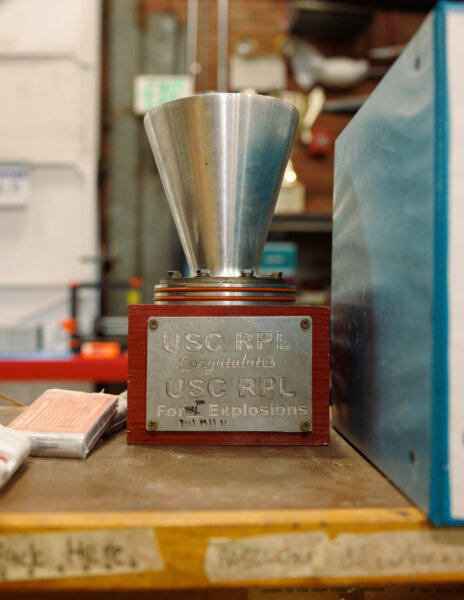
ASTE Timeline
1997
Astronautical engineering emerges as a university-approved specialization within aerospace engineering at USC and develops into a nationally recognized independent program in space engineering.
2004
The Astronautics and Space Technology Division (ASTD), later reorganized as the Department of Astronautical Engineering (ASTE), is formally established at USC, becoming one of the first academic departments in the U.S. dedicated exclusively to astronautics.
2005
Founding of the student-run USC Rocket Propulsion Laboratory (USCRPL).
2006
Founding of the Space Engineering Research Center (SERC), a joint venture of ASTE and USC Information Science Institute (ISI).
2006
Apollo 11 astronaut Buzz Aldrin visits the department and delivers a lecture titled “To the Moon and Beyond.”
2008
Professor Mike Gruntman was a member of NASA’s IBEX space mission team that mapped the interstellar frontier of the solar system for the first time, with the results highlighted on the cover of Science magazine.
2008
Professor Garett Reisman spent 95 days aboard the International Space Station, returning to Earth aboard the space shuttle Discovery.
2010
Launch of USC’s first satellite, Caerus, a 1U CubeSat that was part of a 3U configuration on the Northrop Grumman Mayflower Mission.
2012
ABET accreditation of the ASTE undergraduate program — one of a very small number of programs accredited under the astronautics criteria.
2012
Launch of Aeneas, USC’s second 3U CubeSat designed for tracking and monitoring cargo containers. The satellite is remarkable for its advanced deployable 0.5-meter mesh antenna.
2013
ASTE takes over administration of the Systems Architecting and Engineering program.
2019
USC Rocket Propulsion Laboratory became the first student group to launch and recover the world’s first entirely student-designed and -fabricated rocket into outer space. Traveler IV reached 340,000 feet and set the student world altitude record.
2019
ASTE places a strategic emphasis on research into space sustainability, focusing on technologies to address space debris and develop long-term, sustainable practices for satellite operations.
2020
The United States Space Force announces a historic partnership with the University of Southern California, marking USC as the first university in California to establish such a collaboration.
2022
Launch of Dodona, USC’s third 3U CubeSat and its first satellite capable of capturing images of Earth from space (controlled from a USC dedicated ground station).
2024
USCRPL successfully launches the Aftershock II rocket, the world’s first civilian-built rocket to reach an altitude of 470,000 feet.
2024
USC’s first experimental payload launches to the International Space Station for testing on the Astrobee free-flyer lab platform.




